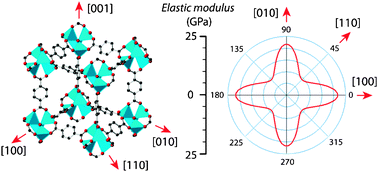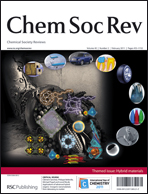Mechanical properties of hybrid inorganic–organic framework materials: establishing fundamental structure–property relationships†
Abstract
The mechanical properties of hybrid framework materials, including both nanoporous metal–organic frameworks (MOFs) and dense inorganic–organic frameworks, are discussed in this critical review. Although there are relatively few studies of this kind in the literature, major recent advances in this area are beginning to shed light on the fundamental structure–mechanical property relationships. Indeed research into the mechanical behavior of this important new class of solid-state materials is central to the design and optimal performance of a multitude of technological applications envisaged. In this review, we examine the elasticity of hybrid frameworks by considering their Young's modulus, Poisson's ratio, bulk modulus and shear modulus. This is followed by discussions of their hardness, plasticity, yield strength and fracture behavior. Our focus is on both experimental and computational approaches. Experimental work on single crystals and amorphized monoliths involved primarily the application of nanoindentation and

- This article is part of the themed collections: Hybrid materials and In celebration of Tony Cheetham’s 70th birthday

 Please wait while we load your content...
Please wait while we load your content...